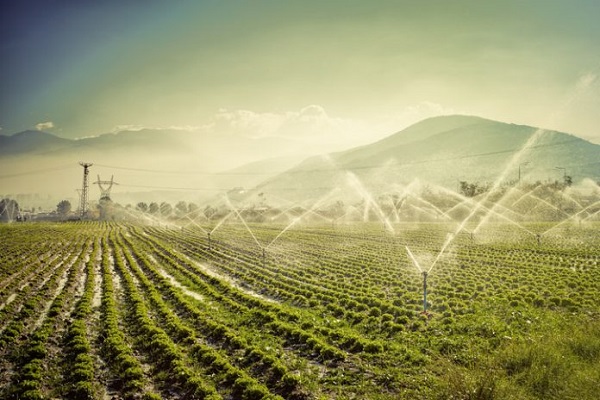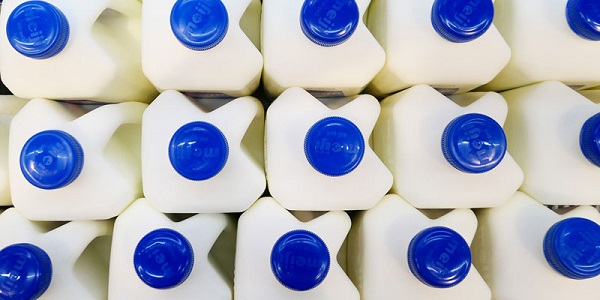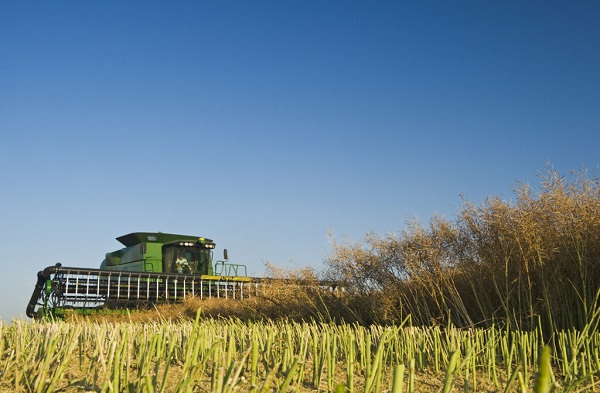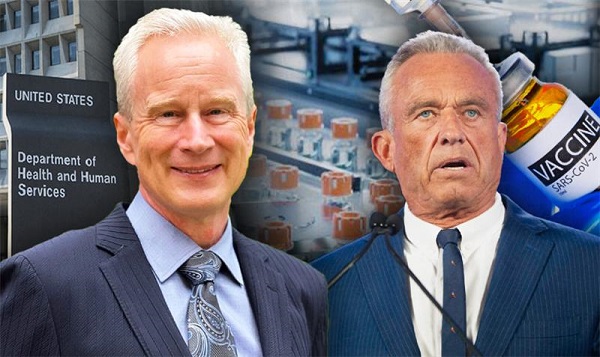Agriculture
‘Net-Zero’ Policies, ESG Reporting Raise Farm Costs, Food Prices—Report

From Heartland Daily News
So-called “net-zero” climate policies are imposing significant costs on American farmers and families, according to a new report from The Buckeye Institute.
A model developed by Buckeye for the report, Net-Zero Climate-Control Policies Will Fail the Farm, indicates that complying with net-zero emissions mandates, and environmental, social, and governance (ESG) reporting standards is likely to increase annual operating expenses for farmers by at least 34 percent. In addition, the model indicated the mandates will result in a 15 percent annual increase in grocery bills for families, as well as significant increases in individual grocery item prices, such as American cheese (79 percent), beef (70 percent), bananas (59 percent), rice (56 percent), and chicken (39 percent).
Net Zero and ESG
“Net-zero” refers to the balance between the amount of carbon dioxide emissions produced and the amount removed from the atmosphere. For a country to achieve “net-zero,” means either not producing any emissions at all or “offsetting” an equivalent amount of emissions through methods like “carbon capture and storage,” reforestation, and the use of “renewable” energy sources. Carbon dioxide pricing schemes like cap-and-trade systems or carbon dioxide taxes are other significant “net-zero” policies.
Meanwhile, ESG scores are essentially a risk assessment mechanism increasingly used by investment firms and financial institutions that force large and small companies to focus upon politically motivated, subjective goals which often run counter to their financial interests and the interests of their customers.
Companies are graded on these mandated commitments to promote, for example, climate or social justice objectives. Those that score poorly are punished by divestment, reduced access to credit and capital, and a refusal from state and municipal governments to contract with them.
ESG Targeting Agriculture
Many of ESG’s metrics, primarily those related to imposing environmental controls, are directly linked to the agricultural industry and food production. Examples of some of these metrics include: “Paris [climate agreement]-aligned GHG [greenhouse gas] emissions targets,” “Impact of GHG emissions,” “Land use and ecological sensitivity,” “Impact of air pollution,” “Impact of freshwater consumption and withdrawal,” “Impact of solid waste disposal,” and “Nutrients”—which, despite its innocuous-sounding name, is a metric that forces companies to estimate the “metric tonnes of nitrogen, phosphorous, and potassium in fertilizer consumed.”
Farmers and food producers use chemical fertilizers and pesticides for crop growth, in addition to producing waste biproducts, consuming substantial quantities of water, using vast swathes of land, and releasing what climate alarmists claim to be planet-ending carbon dioxide emissions.
“Europe, fully committed to the Paris Climate Accords’ decarbonization plan, provides a forecast of the agricultural and economic consequences likely to result from the ESG-reporting agenda,” the report notes. “After implementing strict ESG-reporting mandates, European banks, for example, became reluctant to lend to farmers with high nitrogen and methane emissions. Reduced credit strained family farms.
“Europe’s emissions cap-and-trade policies exacerbated the problem and helped put generational farmers out of business,” the report continues. “Those policies also raised prices of farm-related energy and fertilizer, which, in turn, raised the price of food and groceries.”
‘Immolated’ Farming Industry
The report describes how the European Union’s commitment to the Paris climate agreement and associated ESG and net zero goals are undermining its agricultural sector and food security, which has lessons for the United States.
“Europe immolated its farming industry and made the continent’s food supply more expensive and less secure,” the report says. “Adopting similar policies in the United States will yield similar results.”
Federal and State Fixes
The report makes a number of recommendations for what can be done to “avoid the failures of net-zero policies.”
Federally, they suggest the United States withdraw from the Paris Climate Accords, repeal the “renewable energy” and carbon capture and sequestration subsidies in the Inflation Reduction Act, and consider banning federal agencies like the Farm Credit Administration from utilizing ESG policies.
On the state level, the report recommends states legislatures pass laws preventing “state agencies, fund managers, insurers, and lenders from using ESG criteria to guide investment decisions and set insurance policies and premiums.”
Enlisting the Private Sector
For the private sector Buckeye’s report suggests corporate boards from industries “that will be negatively impacted by ESG reporting and other net-zero policies should inform shareholders about how ESG-reporting requirements will affect operations and long-term shareholder value.” They also suggest farmers “decouple farming practices from their purported climate benefits and use the methods that are best for their farms, families, and produce.”
“Government climate-control policies ensconced in the Paris Climate Accords, the Inflation Reduction Act, and ESG-guided mandates carry a hefty price tag, especially for U.S. farms and the American consumer,” the report concludes. “The full price of climate control policies and directives needs to be measured and understood, especially the costs they will inflict on American farms and households.”
‘Unrealistic, Unattainable,’ and Costly
Buckeye’s analysis is important for putting numbers on the high cost of ESG and Net Zero policies, providing an evidence-based warning to Americans not to follow Europe’s path, says Cameron Sholty, Executive Director of Heartland Impact.
“This report shows what American and European farmers intuitively knew: that net zero carbon emissions are unrealistic, unattainable, and ultimately add cost through the supply chain and ultimately to consumers’ pocket books,” said Sholty. “Buckeye should be commended for putting the numbers to the insidiousness of ill-advised carbon-free farming pursuits.
“Its folly imposed by activists seeking to control the means of production and how we live and thrive in a civilized society,” Sholty said.
Tim Benson ([email protected]) is a senior policy analyst with Heartland Impact.
For more on farm policy, click here.
For more on net zero, click here.
For more on ESG, click here.
Agriculture
Ottawa may soon pass ‘supply management’ law to effectively maintain inflated dairy prices

From the Fraser Institute
Many Canadians today face an unsettling reality. While Canada has long been known as a land of plenty, rising living costs and food insecurity are becoming increasingly common concerns. And a piece of federal legislation—which may soon become law—threatens to make the situation even worse.
According to Statistics Canada, rising prices are now “greatly affecting” nearly half of Canadians who are subsequently struggling to cover basic living costs. Even more alarming, 53 per cent are worried about feeding their families. For policymakers, few national priorities are more pressing than the ability of Canadians to feed themselves.
Between 2020 and 2023, food prices surged by 24 per cent, outpacing the overall inflation rate of 15 per cent. Over the past year, more than one million people visited Ontario food banks—a 25 per cent increase from the previous year.
Amid this crisis, a recent academic report highlighted an unforgivable waste. Since 2012, Canada’s dairy system has discarded 6.8 billion litres of milk—worth about $15 billion. This is not just mismanagement, it’s a policy failure. And inexcusably, the federal government knows how to address rising prices on key food staples but instead turns a blind eye.
Canada’s dairy sector operates under a “supply management” system that controls production through quotas and restricts imports via tariffs. Marketing boards work within this system to manage distribution and set the prices farmers receive. Together, these mechanisms effectively limit competition from both domestic and foreign producers.
This rigid regulated system suppresses competition and efficiency—both are essential for lower prices. Hardest hit are low-income Canadians as they spend a greater share of their income on essentials such as groceries. One estimate ranks Canada as having the sixth-highest milk prices worldwide.
The price gap between the United States and Canada for one litre of milk is around C$1.57. A simple calculation shows that if we could reduce the price gap by half, to $0.79, Canadians would save nearly $1.9 billion annually. And eliminating the price gap would save a family of four $360 a year. There would be further savings if the government also liberalized markets for other dairy products such as cheese, butter and yogurt. These lower costs would make a real difference for millions of Canadians.
Which brings us back to the legislation pending on Parliament Hill. Instead of addressing the high food costs, Ottawa is moving in the opposite direction. Bill C-282, sponsored by the Bloc Quebecois, has passed the House of Commons and is now before the Senate. If enacted, it would stop Canadian trade negotiators from letting other countries sell more supply-managed products in Canada as part of any future trade deal, effectively increasing protection for Canadian industries and creating another legal barrier to reform. While the governing Liberals hold ultimate responsibility for this bill, all parties to some degree support it.
Supply management is already causing trade friction. The U.S. and New Zealand have filed disputes (under the Canada-United States-Mexico Agreement and the Comprehensive and Progressive Agreement for Trans-Pacific Partnership) accusing Canada of failing to meet its commitments on dairy products. If Canada is found in violation, it could face tariffs or other trade restrictions in unrelated sectors. Dairy was also a sticking point in negotiations with the United Kingdom, leading the British to suspend talks on a free trade deal. The costs of defending supply management could ripple farther than agriculture, hurting other Canadian businesses and driving up consumer costs.
Dairy farmers, of course, have invested heavily in the system, and change could be financially painful. Industry groups including the Dairy Farmers of Canada carry significant political influence, especially in Ontario and Quebec, making it politically costly for any party to propose reforms. The concerns of farmers are valid and must be addressed—but they should not stand in the way of opening up these heavily regulated agricultural sectors. With reasonable financial assistance, a gradual transition could ease the burden. After all, New Zealand, with just 5 million people, managed to deregulate its dairy sector and now exports 95 per cent of its milk to 130 countries. There’s no reason Canada could not do something similar.
Bill C-282 is a flawed piece of legislation. Supply management already hurts the most vulnerable Canadians and is the root cause of two trade disputes that threaten harm to other Canadian industries. If passed, this law will further tie the government’s hands in negotiating future free trade agreements. So, who benefits from it? Certainly not Canadians struggling with food insecurity. The government’s refusal to modernize an outdated inefficient system forces Canadians to pay more for basic food staples. If we continue down this path, the economic damage could spread to other sectors, leaving Canadians to bear an ever-increasing financial burden.
Author:
Agriculture
2024 harvest wrap-up: Minister Sigurdson

As the 2024 growing season comes to a close, Minister of Agriculture and Irrigation RJ Sigurdson issued the following statement:
“While many Albertans were enjoying beautiful fall days with above-average temperatures, farmers were working around the clock to get crops off their fields before the weather turned. I commend their continued dedication to growing quality crops, putting food on tables across the province and around the world.
“Favourable weather conditions in August and early September allowed for a rapid start to harvest, leading to quick and efficient completion.
“The final yield estimates show that while the South, North West and Peace regions were slightly above average, the yields in the Central and North East regions were below average.
“Crop quality for oats and dry peas is currently exceeding the five-year average, with a higher rate of these crops grading in the top two grade categories. In contrast, spring wheat, durum, barley and canola are all grading in the top two grades at rates lower than the five-year average.
“Crop grading is a process that determines the quality of a grain crop based on visual inspection and instrument analysis. Factors like frost damage, colour, moisture content and sprouting all impact grade and affect how the grain will perform during processing or how the end product will turn out. Alberta generally produces high-quality crops.
“Farmers faced many challenges over the last few years and, for some areas of the province, 2024 was a difficult growing season. But Alberta producers are innovative and resilient. They work constantly to meet challenges head-on and drive sustainable growth in our agricultural sector.
“Alberta farmers help feed the world, and I’m proud of the reputation for safe, high-quality agricultural products that this industry has built for itself. Thank you to our producers, and congratulations on another successful harvest!”
-

 Brownstone Institute1 day ago
Brownstone Institute1 day agoThe Most Devastating Report So Far
-

 Business1 day ago
Business1 day agoCarbon tax bureaucracy costs taxpayers $800 million
-

 ESG1 day ago
ESG1 day agoCan’t afford Rent? Groceries for your kids? Trudeau says suck it up and pay the tax!
-

 Daily Caller1 day ago
Daily Caller1 day agoLos Angeles Passes ‘Sanctuary City’ Ordinance In Wake Of Trump’s Deportation Plan
-

 John Stossel1 day ago
John Stossel1 day agoGreen Energy Needs Minerals, Yet America Blocks New Mines
-

 COVID-192 days ago
COVID-192 days agoDr. McCullough praises RFK Jr., urges him to pull COVID shots from the market
-

 MAiD2 days ago
MAiD2 days agoOver 40% of people euthanized in Ontario lived in poorest parts of the province: government data
-

 Alberta1 day ago
Alberta1 day agoProvince considering new Red Deer River reservoir east of Red Deer






